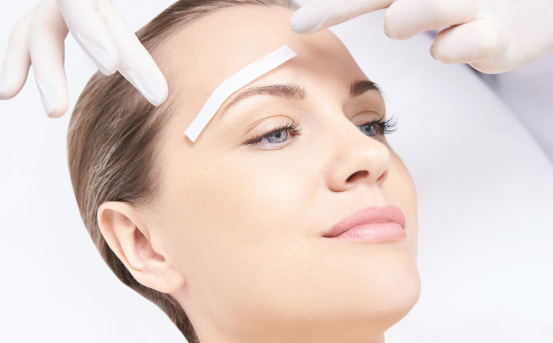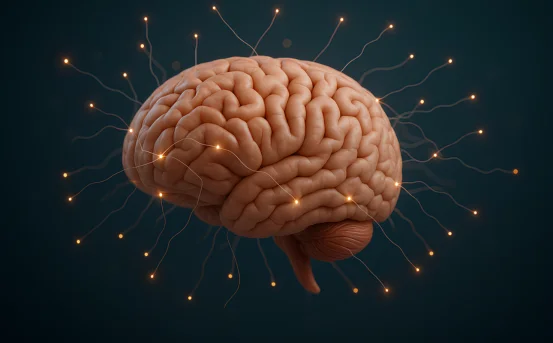Brow lift surgery, also known as a forehead lift, is a cosmetic procedure designed to address these concerns by lifting and tightening the skin and tissues of the forehead. The result is a more youthful, refreshed, and approachable appearance. Brow lifts have become increasingly popular for both men and women who want to rejuvenate the upper portion of their face and restore their natural expressions.
However, while the procedure is effective, it’s not suitable for everyone. Proper diagnosis and medical evaluation are essential to determine whether a brow lift is right for you. Not all forehead wrinkles or droopy brows require surgery some individuals may benefit more from non-invasive treatments like Botox, while others might require a combination of procedures for optimal results.
What is a Brow Lift?
A brow lift is a surgical procedure that raises the eyebrows to reduce the appearance of forehead lines, drooping brows, and frown lines. It enhances facial harmony and improves the overall aesthetics of the upper face. There are different techniques used in brow lift surgery, including :-
-
Traditional (Coronal) Brow Lift
-
Endoscopic Brow Lift
-
Temporal or Lateral Brow Lift
-
Direct Brow Lift
The choice of technique depends on the individual’s facial structure, desired outcomes, and the surgeon’s assessment.
Why is Diagnosis Important Before a Brow Lift?
Brow lift surgery is not a one-size-fits-all solution. A thorough diagnosis ensures :-
-
The procedure addresses the correct concerns.
-
The patient has realistic expectations.
-
There are no underlying medical conditions that might complicate surgery or healing.
-
The patient is psychologically and physically prepared for the operation.
Diagnosis also helps to differentiate whether a brow lift alone will suffice or if other procedures (like eyelid surgery or facelift) are necessary.
Signs You Might Need a Brow Lift
Before scheduling a consultation, you may notice certain changes in your appearance that indicate the need for brow lift surgery. These include :-
- Drooping or Sagging Brows :- If your eyebrows have started to fall below their natural position, creating a tired or sad look, it may be a sign of brow ptosis (drooping brows).
- Deep Forehead Wrinkles :- Pronounced horizontal lines across your forehead are often caused by repetitive expressions and aging skin. A brow lift can help smoothen these lines.
- Frown Lines Between the Eyebrows :- Also known as “11 lines,” these vertical creases can make you appear angry or upset even when you’re not.
- Hooded Upper Eyelids :- In some cases, drooping brows can push down the skin above the eyes, making you look older or affecting vision. If this is the case, a brow lift or a combination of a brow lift and eyelid surgery may be required.
- Low Self-Confidence About Facial Aging :- If you feel your facial expression doesn’t match your inner vitality and youthfulness, a brow lift might be an option to restore harmony.
Diagnosis for Brow Lift Surgery
Diagnosis for brow lift surgery involves several steps. A board-certified plastic surgeon will perform a comprehensive assessment to determine your eligibility.
Medical History Review
The surgeon will ask about your :-
-
General health conditions (e.g., diabetes, hypertension)
-
History of facial surgeries
-
Current medications or allergies
-
Lifestyle habits like smoking or alcohol use
Any underlying condition that may interfere with healing or anesthesia will be carefully considered.
Physical Examination of the Face
This is a key part of the diagnostic process. The surgeon will evaluate :-
-
Brow position in relation to the orbital rim (bony socket)
-
Skin elasticity and texture
-
Asymmetry in brow height
-
Degree of forehead wrinkles and frown lines
-
Eyelid position and any hooding
The goal is to assess how much lift is needed and whether any adjacent areas also need treatment.
Vision Assessment (if necessary)
If sagging brows interfere with your peripheral vision, especially for those with severe brow ptosis, your surgeon may recommend an ophthalmologic assessment. In some cases, this can justify the procedure as medically necessary.
Photographic Analysis
Photographs may be taken from various angles to document the current condition and help in surgical planning. These images are also useful for comparing before and after results.
Skin and Muscle Tone Evaluation
Understanding the tone of the frontalis muscle (the main muscle involved in brow movement) helps decide the type of brow lift technique to use.
Psychological Evaluation and Expectation Management
Part of the diagnostic process is understanding the patient’s expectations. Unrealistic expectations can lead to dissatisfaction even if the surgery is successful from a technical standpoint.
A good candidate should :-
-
Be emotionally stable
-
Have a positive outlook
-
Understand the risks and benefits
-
Be committed to post-operative care
Your surgeon may ask questions to understand your motivations and ensure that you’re seeking the procedure for yourself not due to external pressure.
Imaging or Simulation Tools
Some clinics use 3D imaging software to simulate the potential outcomes of a brow lift. While these tools don’t guarantee exact results, they can help patients visualize improvements and align their expectations.
Who is a Good Candidate for Brow Lift Surgery?
Based on the diagnostic assessments, a good candidate for brow lift surgery usually meets the following criteria :-
-
Aged between 35 and 70, though younger patients with genetic predispositions may also benefit
-
Physically healthy with no major medical conditions
-
Non-smoker (or willing to stop smoking pre- and post-surgery)
-
Realistic about the outcomes
-
Concerned about sagging brows, forehead wrinkles, or tired facial expressions
Who Should Avoid Brow Lift Surgery?
You may not be an ideal candidate if you :-
-
Have uncontrolled medical conditions (e.g., severe heart or lung disease)
-
Have unrealistic expectations about the procedure
-
Cannot commit to the recovery process
-
Have certain neurological or eye disorders that increase surgical risk
Conclusion
A brow lift can make a dramatic difference in your appearance by restoring a more youthful and refreshed look. However, undergoing surgery without a proper diagnosis can lead to unsatisfactory results or complications.
Before committing to brow lift surgery, make sure you undergo a detailed diagnosis. This ensures your safety, sets realistic expectations, and paves the way for successful aesthetic enhancement. If you’re noticing signs of aging on your upper face, now may be the time to schedule a consultation and take the first step toward a refreshed, more confident you.























